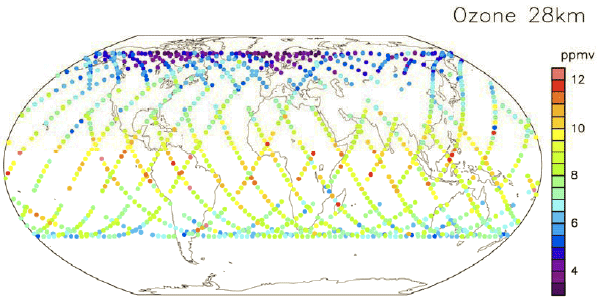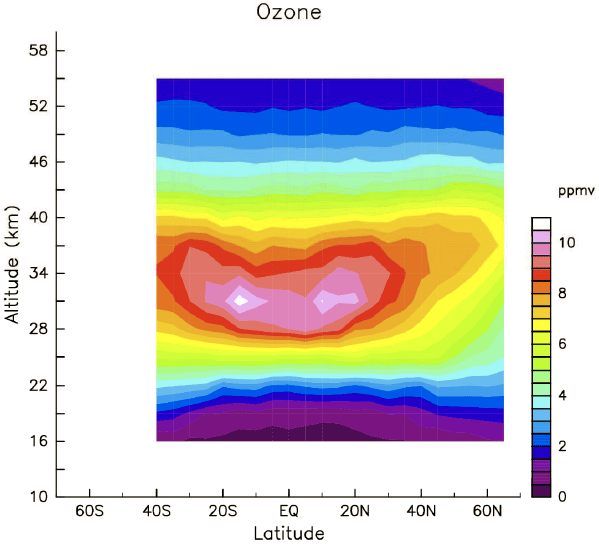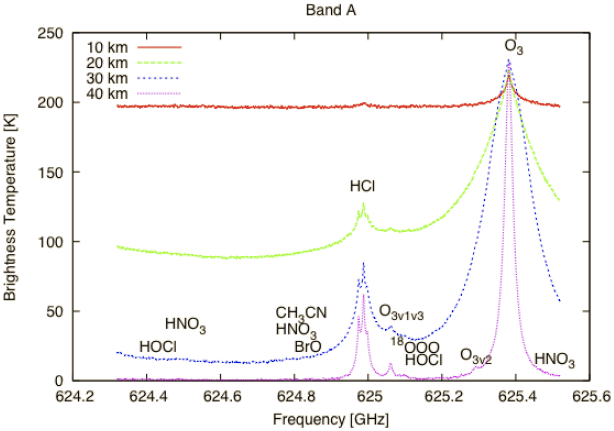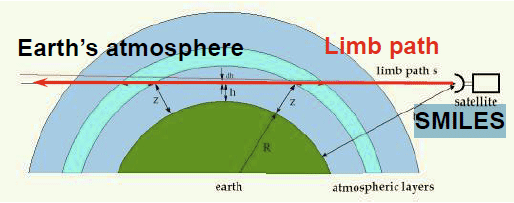The first observation data from SMILES, the Superconducting Submillimeter-Wave Limb-Emission Sounder, which had been attached to the Exposed Facility of Japan Experiment Module “Kibo” on the International Space Station (ISS), has been obtained.
SMILES, which had been developed under the cooperation of Japan Aerospace Exploration Agency (JAXA) and National Institute of Information & Communication Technology (NICT), carries the mechanical cryocooler for the first time as a spaceborne equipment. According to 4-K supercooled superconducting detector, SMILES realises highly precised observation of Earth’s atmospheric constituents than ever before. At the present, the initial checkout of SMILES components results in no problem, so it can be told that all components including cryocooler and superconducting detector is in a normal state.
The following figure shows the global distribution of ozone on the altitude of 28km which is observed by SMILES in October 12th (in JST) [The unit is “ppmv” (parts per million by volume)]
According to this figure, it can be find that ozone exists more around equator region. This shows the characteristics of stratospheric ozone in its global distribution, which is consistent with the result of past observations performed by other satellites.










